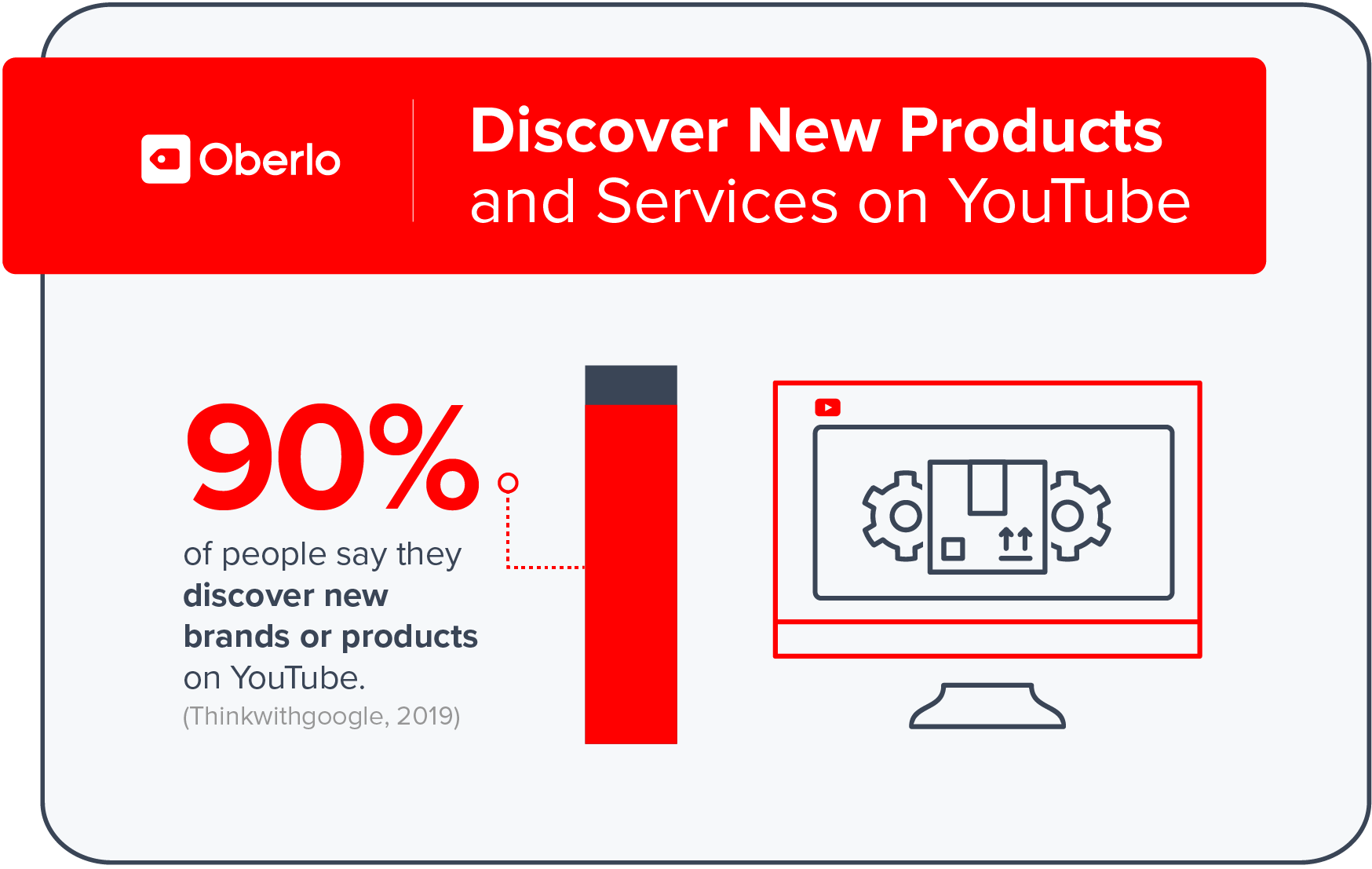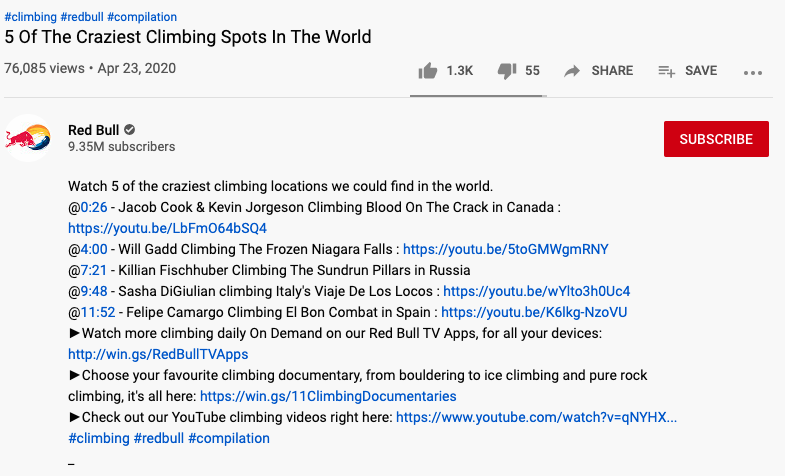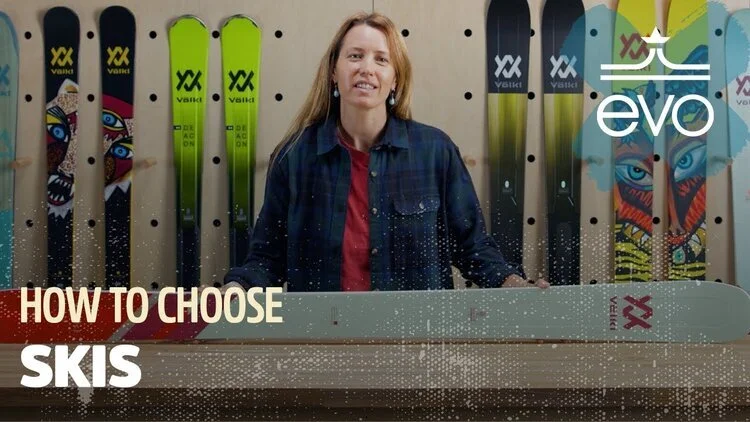how to create and optimize a YouTube channel for your brand
With monthly user numbers in the billions, YouTube is a hugely powerful platform for discovery and entertainment. YouTube can be utilized by your company to show new and existing viewers an inside look into company operations, products, services, and people. Brands that are not leveraging video are not only missing out on opportunities to reach and re-engage customers but are also being left behind in a changing search and web landscape. This guide will cover how to create your YouTube channel and optimize content to connect with both new and existing audiences.
Jump to a Topic
How To Create a YouTube Channel
YouTube Best Practices For Brands
YouTube SEO Tips
How To Create a Playlist
How To Create The Best YouTube Thumbnails
Additional Resources & Reading
Youtube Fun Facts:
Did you know YouTube is the second most visited site and second-largest search engine, behind Google? That equals a ton of opportunities for SEO, eyeballs, and exposure.
The first video posted to the site was in April of 2005 and since then, the site has amassed nearly 2 billion monthly users.
YouTube’s most popular content areas include Educational videos, vlogs, how-to videos, product reviews, comedy skits, and unboxing videos (a key method for consumers to make a purchasing decision)
2019 data from Think with Google
2019 data from DataReportal
How to create a YouTube channel for your brand
Before we dive into the Best Practices for YouTube, use these 8-steps to create your business account:
1. Open a Google account. You can use an existing account or create a new email specifically for YouTube.
To create a Google Account, click this link.
2. After your account is activated, go to YouTube’s homepage.
3. Once at the homepage, locate the avatar logo at the top right of the screen.
4. Click the avatar logo and continue to “Create a Channel”.
5. To make a business account, click “Use a business or other name”.
6. Name the channel or enter your brand’s name. At this point, you’ll be able to “Tell Viewers About Your Channel.” The more complete this section is, the more your followers will be able to locate you through organic search. At this stage, you can also connect other social media handles such as Twitter, Facebook and Instagram.
7. Select “Create” to activate your new Business YouTube channel.
8. Once your page has been activated, add your Hero (or Banner Image) to the channel. Recommended channel art size is 2560x1440 with a max file size of 6GB and YouTube will give you the option to see your banner across multiple devices - Mobile, Desktop, Television.
You’re ready to begin!
YouTube best practices for brands
Now that your account is created, we’re going to jump into the Best Practices for your channel. Success on YouTube means leveraging trends, advertisements, keywords, and more to stand out on the platform. Just like any other web channel, success means creating a solid foundation and implementing strategies to optimize for each of these important aspects. Understanding these YouTube best practices will enable brands and companies to meet new and existing audience members while expanding their online presence. So whether you are starting a brand new channel, or looking to optimize your existing YouTube channel, these steps can help you maximize your reach and content.
#1: Research & Understand Your Competition
Begin by researching competing brands’ YouTube channels to see what kind of content they are posting, what types of videos are performing well or underperforming, and what your shared audience enjoys watching. This can help you plan your own content strategy. Likewise, you can look at channel statistics, like subscribers, views per video, etc. to benchmark and set goals for your own channel.
You can take things a step further by taking a deep dive into the comments of other brands' videos. Are users generally enjoying the content? Providing critiques? Asking for more or different content? This real-life user feedback can once again help to steer your own content creation.
#2: Study the Channels You Enjoy Watching
To begin to understand how to stand out on YouTube, look into your favorite YouTubers’ channels and pay attention to techniques they utilize to drive engagement, followers, and views. These often include multiple call-to-actions throughout videos including an end page with links and logos that show off their brands. Many YouTubers will ask their audience to “subscribe” to their account two or three times in a video.
Between this research and your competitor research, you can begin to create your own checklist of best practices that you want to include in your own videos. The exact elements and styles that you choose to include will vary depending on your brand and goals. We recommend writing this list down and keeping it handy throughout the content creation process.
#3: Set a Solid Foundation & Nail the Basics
Your brand’s channel should exemplify the brand in every way. This includes each aspect of the page, from the banner image to linked social media accounts, and to your channel description. Use the list below as a checklist for implementing your brand into YouTube:
Upload a Hero or Banner Image that represents your brand. You did this in the process of setting up your account, but remember that you can customize this and change it throughout the year. (Recommended size: 2560x1440 with a max file size of 6GB)
PRO TIP: YouTube gives you an option to view your banner image on multiple devices. Check this feature to guarantee your image will fit mobile, desktop and tv.
Add a thumbnail that matches your brand ( logos are often used for this)
In the ‘About’ section, add a description of your brand. This will act as an introduction to new viewers, reflecting your brands’ voice. Adding links to social media and your brands’ websites will give viewers more platforms to interact with your brand.
Example: The About page of Red Bull is a shining example of how a brand is able to describe their value to consumers, linking their social media and website to the page. Red Bull has amassed an enormous subscriber total and operates on multiple channels to provide content for a vast audience. Throughout each channel and video, Red Bull is able to show their brands’ voices through adventure, activity, and connection to their audience.
For every video you post to your YouTube Channel, make sure you’re creating a description for the video that represents your brand voice and is consistent with the language you would use in a newsletter, on your website, or through other social channels.
#4: How to Bring Brand Voice Into Video Content
Creating content that will get viewers talking about your videos and brand is vital to developing a lasting audience. Your brand can achieve this by creating videos that compliment blog postings and website content.
Quality content will change depending on your niche, but interviews, educational explanations, product reviews, and step-by-step expos can drive a large amount of traffic to your site. Posting this content consistently will provide a relationship with viewers and establish your brand as trustworthy. When loyal audience members open the site, they will look for your brand's content if that relationship is strong.
Another way to ensure your brand voice is connected to your video content is through the discussion/comments functionality of YouTube. Under every YouTube video, your audience is able to “Add a public comment…” This feature not only allows your fans to interact with the video content you’re putting out, but it allows for you as a brand to respond.
In addition, brands who interact and respond to comments and trigger their algorithm to increase the organic reach of the content - it values this type of interaction favorably and it will reward you will a larger audience.
#5: optimize video for SEO (Search Engine Optimization)
Thinking of YouTube content in a similar way to a page on your website means optimizing them for search, or SEO. In fact, YouTube can be a boon to your SEO strategy overall, giving you great real estate in Google, while unlocking traffic through a whole new search engine in YouTube itself. YouTube SEO includes the use of titles, keywords, tags, thumbnails and other search-promoting actions you can take to promote your brand’s content and boost engagement.
Check out the Additional Resources section, below, for some of our favorites SEO tips & tools.
Tagging is also an important feature of YouTube. Include your Brand-Specific tags. These are the ones that your brand highlights on other platforms, through your website, etc. Your brand name is a perfect example of a Brand-Specific tag. A good trick to finding out which tags should be used for your videos is to use the YouTube search engine to find out what users are looking for that may connect them to your video.
Hashtags, more commonly seen on Twitter and Instagram, can also be an important tool on YouTube. Hashtags can be added to the Title of YouTube Videos, but it is recommended that you use them in the description of your video instead. Using hashtags that are brand-specific will help to ensure that your other brand videos (or similar content) will automatically and organically be added to the “Up next” feature of YouTube.
#6: Consider the Length of Your Videos
YouTube’s video length landscape has shifted dramatically over the last decade. YouTube was built on short videos (2-4 minutes) that drove value in the first minute, but this is changing. YouTube has shifted its algorithm to promote videos that reach lengths of 10-90 minutes. Many report that the ideal video length is anywhere from 10-25 minutes. This has come in wake of the news that more than half the videos watched on mobile devices are over 20 minutes. YouTube would like to become another quasi-television service, making long-form content more and more important.
What does this mean for you? While creating longer content may be a challenge, it is the future of the streaming service. For sustained channel life, content that results in a watch time of 10-20 minutes is ideal. That said, don’t go for length just for length’s sake, make sure that your videos are engaging and well organized to keep viewers watching. This may include:
Q&A sessions with CEO’s, executives, team members, clients
Trade show overviews
Comedic content about your brand
Product overviews
#7: Optimize your YouTube Homepage & Playlists
To promote your homepage, think about what you want your viewers to get from the first thing they see and what features you want to highlight. Using links to promote your exterior content is a great way to inform users about your brand and what you do. This may include blogs, Twitter, Facebook, Instagram, emails, and your company's website.
Playlists are a great way to keep users engaged over multiple videos. Google has created this as a helpful guide to use as a resource. A quick guide on how to create your playlist can be found in the additional resources below.
#8: Test, Learn & Iterate
The last best practice we can offer is simple - GO FOR IT! In order to start seeing results, you have to get your feet wet, get out of your comfort zone and try something new. This also means learning and sometimes failing. Not every type of content will work for every type of brand, so be willing to try different formats and learn from your mistakes as you build and cultivate your audience. Likewise, it can take some scale to really see the fruits of your labor, so don’t give up if your first video does not go viral! The more content you create, and the more engagement you get, the better your channel and videos will perform over time.
YouTube SEO tips
How to Do Keyword Research for YouTube:
Like any kind of content creation, optimizing for SEO means starting with keyword research. There are some tools that can help to look into search volume on YouTube specifically, or you can simply look at Google search volume as a directional guide. The goal with YouTube keyword research is simple: find out what people are searching for so that you can tailor your content to best suit the largest number of people.
Using your favorite keyword research tool is a great place to start. If you don’t have a favorite yet, check out the links below. Another way to find keywords is on YouTube itself. Looking at the automatically generated topics and similar searches can help you understand what folks are searching for.
Start by searching for the broad topic that you are planning to create content for. Looking at similar keywords can reveal other topics to include, or give you clues like using one way of talking about a topic instead of another. This research can help you all the way from script writing to optimizing your video titles and descriptions.
How to Use YouTube Tags
Tags help both YouTube and viewers understand what your video is about, and how it fits into larger topics. Using relevant tags can help your video get more visibility and views. To maximize the reach of your content, every video should have tags. We recommend at least 10 per video. Tags should include the keywords that you are targeting in the video and should be a mix of shorter head terms and more longtail keywords and questions. Hubspot has created an article on the best practices relating to tags, including tag generators like Keyword Keg and Keyword Tool.
Generally, tags can be used to describe an overarching or specific topic covered in your content. If your video is on making a pizza, a broad tag could be pizza or dough. On the other hand, longtail tags could include: how to make pizza dough, diy pizza dough recipe, or how to make pizza at home.
Our favorite tools for SEO Optimization:
Google Keyword Planner (free)
Google Trends (free)
Ubersuggest (free)
SEMRush (limited free use)
Moz (limited free use)
If you’d like additional guidance, we are happy to help here at Verde! Our SEO team is happy to discuss.
how to create the best YouTube thumbnails for your brand
Thumbnails are the images your viewers will see when scrolling through video results. This image informs viewers about the content they are going to see in your video and can heavily impact who actually clicks watch your videos. Having a compelling thumbnail image can not only increase viewership but can give you brand impressions in search, both on YouTube and Google. This is why we recommend that every video you upload has a custom thumbnail image, and YouTube seems to agree - YouTube’s Creator Academy states, “90% of the best performing videos on YouTube have custom thumbnails.” Thumbnails should be 1280 X 720 pixels and 2MB or smaller in a .gif, .jgp, .bmp, or a .png file. This will result in a high-quality photo that should complement your title.
YouTube Thumbnail Best Practices
1280 X 720 pixels
Under 2MB files size
Jpeg, gif, or png file format
Include video title
Include brand logo
how to create a YouTube playlist
A playlist in YouTube is a list of videos that will play in order, one video after the other. Rather than relying on the auto-play feature to promote your videos and get in front of your audiences, a playlist, created by you, will guarantee your viewers see your videos. Here are the steps to follow to create your own:
Find a video you want in the playlist
Under the video, click Save
Select Watch later, Faves, or a playlist you've already created, or click Create new playlist
If you create a new playlist, enter a playlist name.
Use the drop-down box to select your playlist's privacy setting. If it's private, only you can view the playlist
Click Create
If you’re just getting started with YouTube, you can still use the playlist feature by adding other channels videos you a playlist under your page.
Additional Resources and Helpful Information:
How to create a YouTube Business Account: A Step-by-Step Guide
Google’s Watch Time Report: YouTube offers metrics to track watch time, impressions, impression click-through rate and more. The link offers more information.
YouTube offers Creator Academy; a learning center where YouTubes newest creators can understand how to grow their audience, create a content strategy, understand video production, optimize their channel and make money through advertisements.
Creating a YouTube channel for your brand can feel daunting but it’s important to remember that you don’t need to do it all at once. Spend a little bit of time each day checking off another task on this last and before you know it you’ll have a channel that is SEO-driven, easy to navigate and embodies your brand identity.
The clearer your vision for what you want your brand channel to look like the easier it will be to create. Know your audience and capitalize on what they want to see - be that influencer content or ‘How To’ videos. The reach of this platform is bigger than any other channel in your arsenal - so don’t be afraid to use it!
Still struggling to feel confident in tackling this task on your own? Remember we’re here to help however we can so, gives us a shout.







